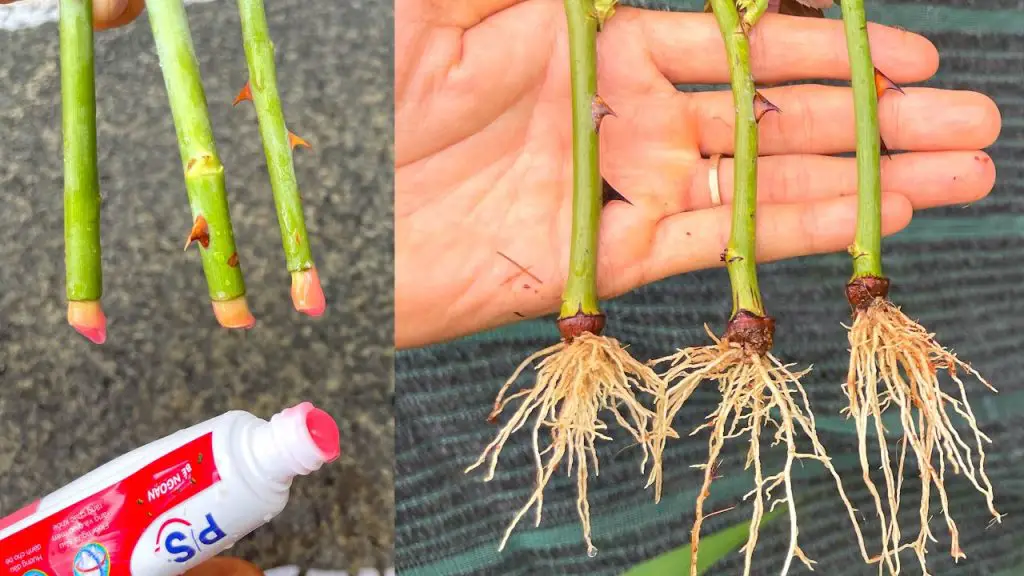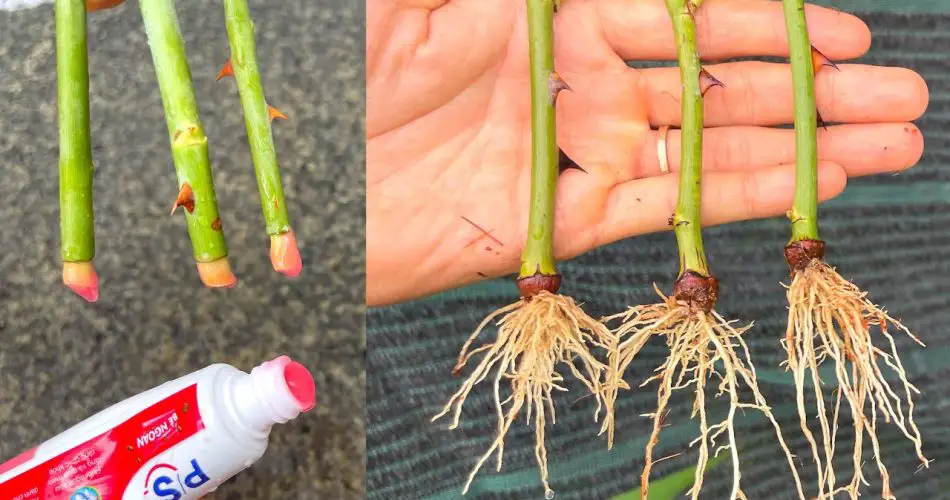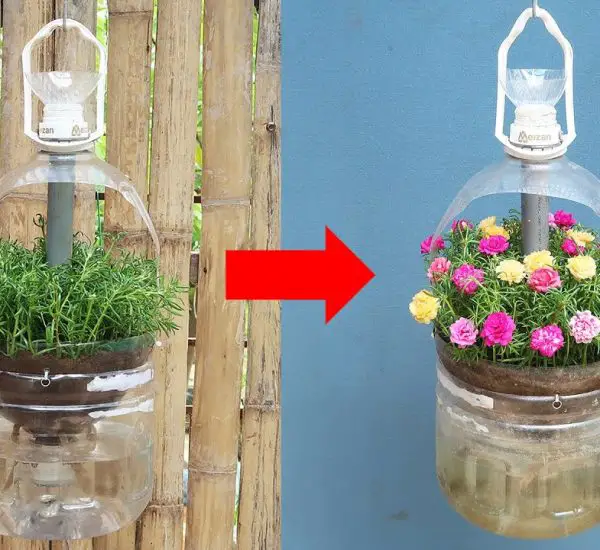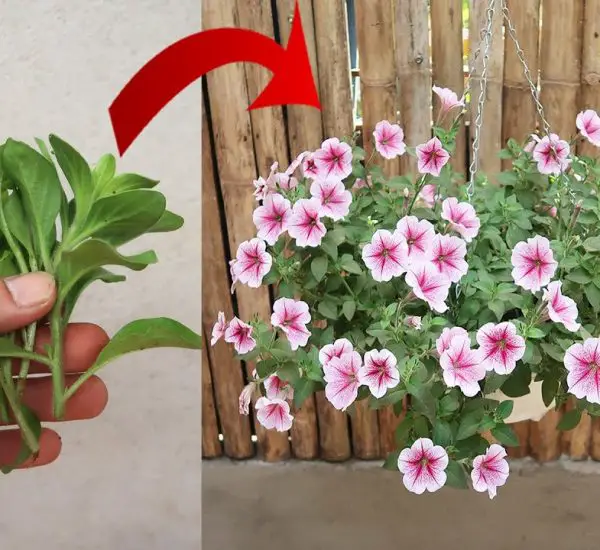When it comes to propagating roses, many gardeners are familiar with common techniques like using water or rooting hormones. However, did you know that toothpaste can also be used as an effective and unique rooting agent for rose cuttings? This simple household item contains properties that can help stimulate root growth and ensure the healthy propagation of your rose plants. Here’s a step-by-step guide on how to propagate rose branches using toothpaste, a technique that’s both easy and innovative.
Why Use Toothpaste for Propagating Roses?

Toothpaste may seem like an unlikely choice for plant care, but it actually has a few key qualities that make it a great rooting stimulant. Some types of toothpaste contain antibacterial properties that can prevent infections at the cutting’s base, promoting healthy root development. Additionally, glycerin, which is often found in toothpaste, can act as a moisturizing agent, keeping the cutting hydrated while it forms roots.
So, why not give it a try and see how this simple method can work wonders for your roses?
Materials Needed for Propagating Roses with Toothpaste
- Healthy rose branches (cuttings) – Look for strong, healthy stems that are about 6 inches long with a few leaves.
- Toothpaste – Use a white, non-gel variety of toothpaste. Avoid toothpaste with additional colors or ingredients like whitening agents.
- Sharp scissors or pruning shears – To cut the rose branches.
- Rooting medium – You can use soil, sand, or a water-filled container for rooting.
- Water – To keep the cuttings hydrated.
- Plastic wrap or a plastic bag – To create a mini greenhouse effect.
Step-by-Step Guide to Propagate Roses Using Toothpaste
Step 1: Prepare the Rose Cutting
- Select a healthy rose branch from your plant. Choose a stem that is young and healthy, about 6 inches long. Make sure it has a few leaves and no flowers.
- Make a clean cut just below a node (where a leaf is attached to the stem). Use sharp scissors or pruning shears to prevent any damage to the cutting.
- Remove any leaves that are near the base of the cutting to avoid them rotting in the soil or water.
Step 2: Apply the Toothpaste
- Coat the cut end of the rose cutting with a small amount of toothpaste. Simply dip the cut end into the toothpaste or use your finger to spread a thin layer over the surface.
- Ensure the toothpaste covers the entire cut area, as this will help prevent bacteria from entering and promote root development.
- Toothpaste creates a protective seal over the wound, which aids in the healing process and ensures the cutting stays hydrated.
Step 3: Plant the Rose Cutting
- Prepare your rooting medium—you can either use a small pot with well-draining soil or a container filled with clean water.
- If using soil, make a small hole with a stick or your finger and place the toothpaste-coated cutting into the soil. Gently firm the soil around the cutting to ensure it’s stable.
- If using water, submerge the cut end of the rose cutting in the water, making sure the toothpaste-coated area remains above the water level.
Step 4: Create a Greenhouse Effect
- To help retain moisture and encourage root growth, cover the cutting with plastic wrap or place it in a clear plastic bag. This will create a humid environment similar to a mini greenhouse.
- Place the cutting in a location that receives indirect sunlight. Avoid direct sunlight, as it can dry out the cutting or cause overheating.
Step 5: Water and Wait for Roots to Develop
- Check the cutting daily to ensure it’s staying hydrated. If you’re using soil, make sure the soil remains moist but not soggy.
- If you’re propagating in water, change the water every few days to keep it fresh.
- Patience is key! Within 3 to 4 weeks, you should start to see roots forming. Once you notice strong root growth, you can transplant the cutting into a larger pot or directly into your garden.
Benefits of Using Toothpaste for Propagation
- Natural Rooting Aid: The glycerin and antibacterial properties in toothpaste help your rose cuttings thrive.
- Easy and Affordable: Toothpaste is a household item, so you don’t need to buy expensive rooting hormones or products.
- Healthy, Strong Roots: The protection provided by the toothpaste ensures your cutting remains healthy, helping to create a more robust root system.
Tips for Success
- Choose a good-quality toothpaste that doesn’t contain harsh chemicals or additional coloring.
- Keep the cuttings in a warm, humid environment to help them develop roots faster.
- Be patient: Some rose varieties may take longer to root, but with consistent care, they should eventually thrive.
- Monitor for mold: If you notice mold growth around the cuttings, remove the plastic covering for a while to allow airflow.
Conclusion: A Simple and Effective Method to Propagate Roses
Using toothpaste to propagate rose cuttings is a unique and effective technique that few gardeners know about. It’s a simple way to encourage root growth and ensure your roses develop into healthy, blooming plants. By following these easy steps, you can propagate your favorite rose varieties and enjoy a garden full of stunning blooms. Give it a try and see how this innovative method can work wonders for your rose garden!



